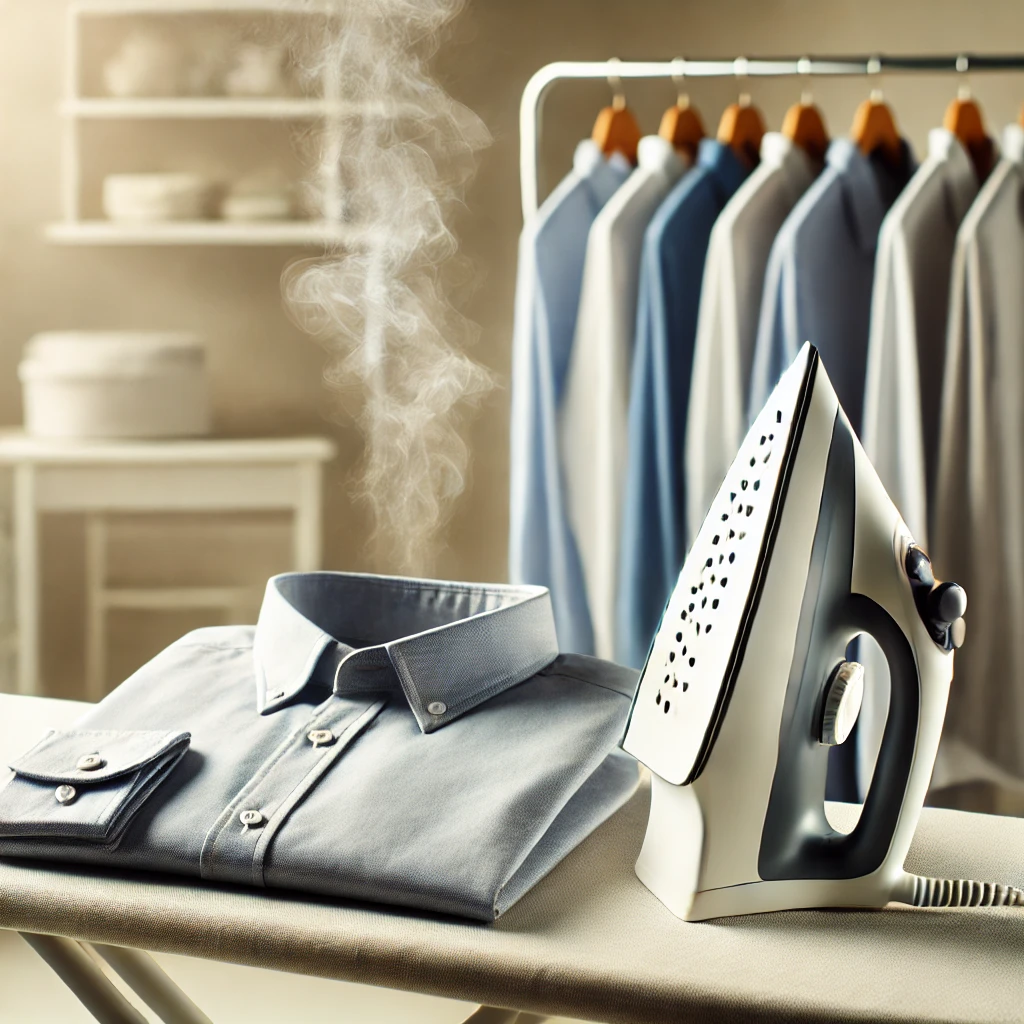
1. Why is Ironing a Shirt Important?
Ironing Changes Your Appearance: What a Clean Shirt Means
Ironing is not just about removing wrinkles—it significantly impacts how you present yourself. A well-ironed shirt conveys professionalism and attention to detail, whether at work or social events. Wearing a wrinkled shirt can make you appear careless, even if the rest of your outfit is well put together.
The Negative Impression of a Wrinkled Shirt
A wrinkled shirt can make others perceive you as disorganized or unprepared. Studies show that first impressions are formed in seconds, and clothing plays a critical role in this. People tend to associate an unkempt appearance with a lack of reliability and professionalism.
How Ironing Helps Prolong Shirt Longevity
Ironing not only improves appearance but also extends the life of a shirt. Wrinkles can cause fabric fibers to break down over time, leading to premature wear and tear. By ironing your shirt correctly, you keep the fabric smooth and free from unnecessary stress, ensuring a longer lifespan.
2. Essential Tools for Ironing a Shirt
Choosing the Right Iron: Steam vs. Dry Iron
There are two main types of irons—steam and dry. Steam irons are more effective at removing stubborn wrinkles, as they use moisture to relax the fabric. On the other hand, dry irons offer more precision and are useful for delicate materials. Choosing the right iron depends on your fabric type and desired finish.
Selecting a Good Ironing Board
An ironing board with adjustable height and a sturdy surface makes ironing easier. Some models come with built-in heat-resistant covers that distribute heat evenly, ensuring a crisp finish. A board with a sleeve attachment can help when ironing narrow parts of a shirt.
The Role of a Spray Bottle and Cloth
A spray bottle filled with water is helpful for tackling deep wrinkles. Lightly misting the fabric before ironing helps smooth out creases. Additionally, using a thin cloth between the iron and delicate fabrics can prevent damage from excessive heat.
3. Mastering the Basic Ironing Process
Prepping the Shirt: Dampening for Best Results
Ironing a slightly damp shirt can make the process easier. If your shirt is completely dry, lightly mist it with water before starting. Many irons also have a steam function that allows you to achieve similar results.
Efficient Ironing Techniques
Start with the collar and cuffs before moving on to larger sections. Iron in long, even strokes instead of short, choppy motions to avoid creating new wrinkles. Adjust the temperature based on the fabric type to prevent damage.
Finishing Touches: Collar, Sleeves, and Button Area
The collar and cuffs require extra attention since they are often the most visible parts of a shirt. For button areas, iron around them rather than directly over them to prevent wear on the threads. A final steam pass can help set the fabric for a polished look.
4. Fabric-Specific Ironing Techniques
Cotton and Linen Shirts: High Heat and Moisture
Cotton and linen shirts require a high heat setting and steam for the best results. Linen, in particular, tends to wrinkle easily, so ironing while the fabric is still slightly damp is recommended.
Silk and Wool Blend Shirts: Low Heat and Extra Care
Silk and wool blends are more delicate and should be ironed using low heat. Place a thin cloth between the iron and the fabric to prevent direct heat damage. Always iron silk inside-out to avoid unwanted shine.
Are Non-Iron Shirts Truly Wrinkle-Free?
While non-iron shirts require less maintenance, occasional touch-ups may still be necessary. Hanging them properly after washing and using a garment steamer can help maintain their wrinkle-free appearance without the need for traditional ironing.
5. Tips and Tricks for Easier Ironing
Reducing Wrinkles During Washing
Proper washing techniques can minimize wrinkles before ironing. Using the right detergent, avoiding overcrowding the washing machine, and promptly removing shirts from the dryer can make ironing much easier.
Using Hangers to Prevent Wrinkles
Storing shirts on quality hangers instead of folding them can reduce wrinkles. Wooden or padded hangers help maintain the shape of the shirt, while wire hangers can cause creases.
Alternative Methods: Wrinkle-Release Spray and Steamers
If you don’t have time for ironing, wrinkle-release sprays and garment steamers are great alternatives. These tools help refresh shirts quickly and remove minor wrinkles without direct heat.
Conclusion
Ironing a shirt properly is not just about achieving a neat appearance but also about maintaining the quality of the fabric. By using the right tools, following effective techniques, and understanding fabric-specific ironing needs, you can ensure that your shirts always look their best. Proper storage and washing habits further reduce the need for constant ironing, making your routine more efficient. Incorporating these habits will help you achieve a polished and professional look effortlessly.



Comment